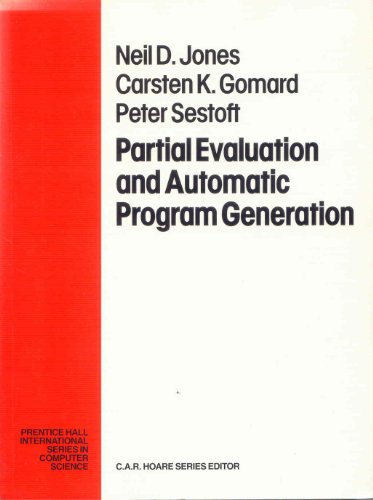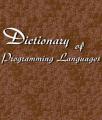
Partial Evaluation and Automatic Program Generation
by Neil D. Jones, Carsten K. Gomard, Peter Sestoft
Publisher: Prentice Hall 1993
ISBN/ASIN: 0130202495
ISBN-13: 9780130202499
Number of pages: 400
Description:
This book is about partial evaluation, a program optimization technique also known as program specialization. It presents general principles for constructing partial evaluators for a variety of programming languages, and it gives examples of applications and numerous references to the literature. Partial evaluation works with program texts rather than mathematical functions: a partial evaluator is an algorithm which, when given a program and some of its input data, produces a so-called residual or specialized program. Running the residual program on the remaining input data will yield the same result as running the original program on all of its input data.
Download or read it online for free here:
Download link
(1.7MB, PDF)
Similar books
 Semantics of Programming Languages
Semantics of Programming Languagesby Andrew M. Pitts - University of Cambridge
These notes introduce the structural, operational approach to programming language semantics. The course shows how to specify the meaning of some simple programming language constructs and to reason formally about semantic properties of programs.
(9989 views)
 Denotational Semantics: A Methodology for Language Development
Denotational Semantics: A Methodology for Language Developmentby David Schmidt - Kansas State University
Denotational semantics is a methodology for giving mathematical meaning to programming languages and systems. This book was written to make denotational semantics accessible to a wider audience and to update existing texts in the area.
(13135 views)
 Understanding Programming Languages
Understanding Programming Languagesby Monti Ben-Ari - John Wiley & Sons
The book explains what alternatives are available to the language designer, how language constructs should be used for safety and readability, how language constructs are implemented, the role of language in expressing and enforcing abstractions.
(17192 views)
 Dictionary of Programming Languages
Dictionary of Programming Languagesby Neal Ziring
The Dictionary of Programming Languages is an online compendium of computer coding methods assembled to provide information and aid your appreciation for computer science history. The dictionary currently has over 120 entries.
(13858 views)